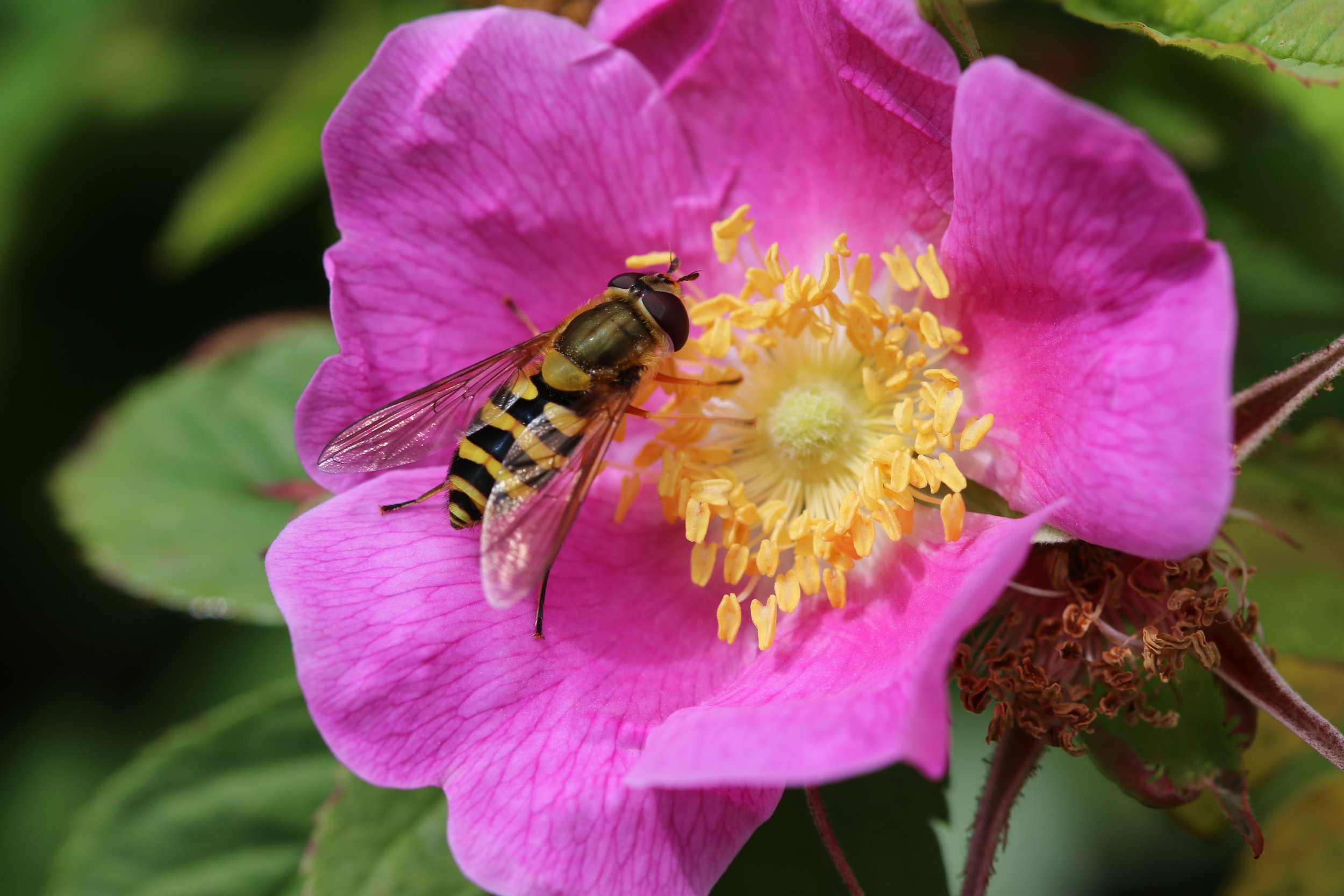Wild Roses, Ancient Grandmothers
“Wild roses,” I said to them one morning.“Do you have the answers? And if you do, would you tell me?”
The roses laughed softly. “Forgive us,” they said. “But as you can see, we arejust now entirely busy being roses.”
The Wild Rose is an old soul.
Did you know that all garden roses are descendants of wild roses? Think of the wild rose as the ancient grandmother of all of today’s roses.
Fossil evidence suggests that wild roses have flourished for at least 35 to 40 million years.
Isn’t that incredible? When I think of this, my appreciation for these fragrant beauties deepens even more.
Where I live, Rosa acicularis, aka the Alberta Wild Rose or the prickly wild rose, begins to bloom in June. The beautiful pink flowers have five petals and prominent yellow stamens in the center. There are many different species of wild roses found throughout the world. Wild roses always have five petals – and are mostly pink (although some can be white, yellow or red).
Rose Medicine
The scent of rose calms the mind, opens the heart and restores a sense of well-being.
The essential oil, distilled from the fragrant blossoms, is soothing for all skin types – especially dry, mature and sensitive skin.
Roses are valued for their nervine (nerve calming) properties. Aromatherapists use rose essential oil to help ease anxiety and irritability and to heal grief and heartache. Roses teach us to be loving and compassionate to ourselves.
Seasonal Ritual: Harvesting Rose Petals
Rose Harvesting Tips
The best time to harvest wild roses is in late spring to early summer when they have just opened and are very fragrant. Harvest the flowers in dry weather and after the dew has evaporated. Whole flowers can be pinched off but I recommend harvesting the petals, leaving the stamens intact to develop a rosehip – the fruit of the rose.
Pick petals and hips that are in an area free from pesticides, herbicides, car exhaust fumes, and other contaminants. Make sure the petals are disease free and free from insect damage.
If you are foraging in the wild, make sure that you have permission to forage in the area. Do not pick the first wild roses that you see. Always forage the second or third ones.
Before you harvest the roses, take your time to say hello to the roses using all of your senses. Smell their beautiful fragrance. Gently touch the rose petals and feel their softness. Notice the color of the blossoms. Listen for the bees drinking their nectar.
You may wish to ask the roses for permission to harvest them and wait for a response or a sign – this could be a robin singing, the presence of a honeybee – whatever feels meaningful to you.
Harvest only what you need.
Upon leaving, express gratitude to the roses.
Two Methods for Preserving Rose Petals
Drying Rose Petals
Before I bring my freshly foraged rose petals into my studio, I lay them out on a tea towel (or paper towel) outside and give the insects time to crawl away.
Then I bring them inside, and I usually dry the petals on a screen away from sunlight. This takes at least a week (or longer) depending on the humidity in the air.
I have also recently tried drying the petals using a dehydrator. If you try this method, you’ll need to make sure that the dehydrator is set to the lowest temperature as you do not want to burn the petals.
I like to use these dried rose petals to make herbal teas or bath salts.
Pressing Flowers with a Heavy Book
To get started, open a heavy book and place parchment paper (or newspaper) on the pages. Place the Wild Roses face down on the paper, and close the book. I sometimes put something heavy on top of the book for extra weight. Wait for about two weeks, and remove your flowers once they're fully dried.
Turn your cake or cupcakes into fairy cakes! Decorate the top of a cake or cupcakes with pressed rose petals.



